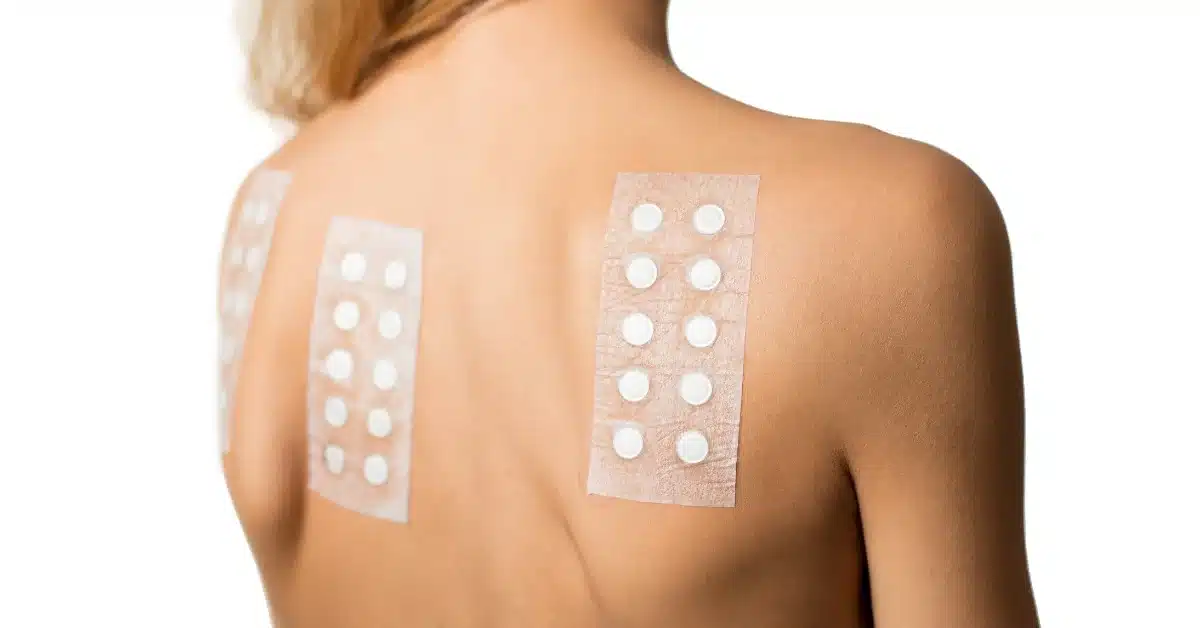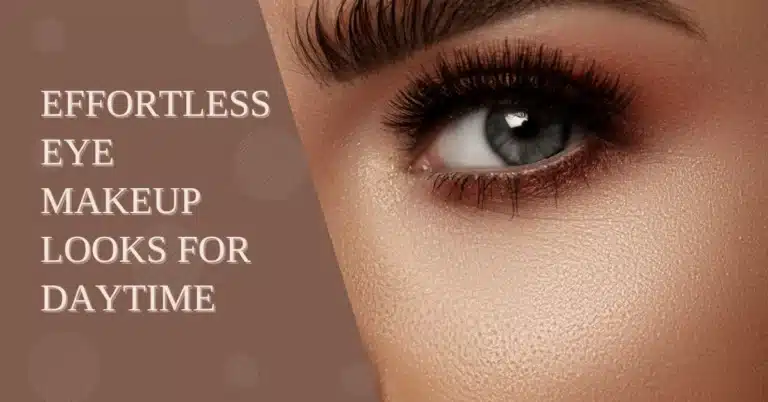Makeup Allergy Test: What Is It And How To Do It?

Makeup has become an integral part of our daily lives, allowing us to express ourselves creatively and enhance our natural beauty. However, for some individuals, the dream of flawless beauty can quickly turn into a nightmare due to makeup allergies.
If you’ve experienced adverse reactions to cosmetics, it’s crucial to understand makeup allergy tests and their purpose. We will explore the concept of a makeup allergy test and provide insights into what it is and how to conduct it.
Whether you’re a makeup enthusiast or a professional, understanding makeup allergies and testing methods is essential for maintaining healthy and vibrant skin.
TABLE OF CONTENTS
- WHAT IS A MAKEUP ALLERGY TEST?
- WHY SHOULD YOU CONSIDER A MAKEUP ALLERGY TEST?
- METHODS OF MAKEUP ALLERGY TESTING
- HOW TO PERFORM A MAKEUP ALLERGY TEST
- PREVENTING MAKEUP ALLERGIES
- THE TAKEAWAY
WHAT IS A MAKEUP ALLERGY TEST?
A makeup allergy test, also known as cosmetic allergy patch testing or skin sensitivity test for cosmetics, is a diagnostic tool used to identify specific substances within cosmetics that trigger allergic reactions. This test aims to determine if an individual has an allergy or sensitivity to certain ingredients commonly found in makeup products.
By pinpointing the allergens, individuals can make informed decisions about the cosmetics they use and minimize the risk of future allergic reactions.
WHY SHOULD YOU CONSIDER A MAKEUP ALLERGY TEST?
If you’ve experienced symptoms like redness, itching, swelling, rashes, or even blistering after applying makeup, it’s crucial to identify the root cause of these reactions. Makeup allergy testing can provide clarity by isolating the specific ingredients that trigger your allergic response. Armed with this knowledge, you can make wiser choices when selecting makeup products, opting for hypoallergenic or allergen-free alternatives.
Additionally, understanding your allergies can help you communicate effectively with dermatologists, allergists, and makeup professionals, ensuring a safer and more enjoyable cosmetic experience.
METHODS OF MAKEUP ALLERGY TESTING
1. Patch Testing
Patch testing is the most common method employed in makeup allergy testing. It involves applying small amounts of various allergenic substances, including those found in makeup products, onto patches that are then affixed to your skin. These patches are typically placed on your back and left undisturbed for 48 hours. After this period, the patches are removed, and the skin is examined for any allergic reactions.
Patch testing allows for the detection of delayed hypersensitivity reactions, which might not manifest immediately.
2. Open Application Testing
Open application testing involves applying a small amount of the suspected allergenic substance directly to your skin, usually on the forearm or behind the ear. Unlike patch testing, which identifies delayed reactions, open application testing primarily detects immediate allergic reactions.
This method is particularly useful for detecting contact urticaria, a type of allergy that causes hives or welts to appear on the skin shortly after contact with an allergen.
HOW TO PERFORM A MAKEUP ALLERGY TEST
1. Consultation with a Dermatologist or Allergist
Before conducting a makeup allergy test, it’s essential to consult with a qualified dermatologist or allergist. They will go through your medical history, discuss your symptoms, and evaluate your suitability for allergy testing. Based on your specific situation, they will guide you through the appropriate testing method and provide instructions for the test itself.
2. Preparation for the Test
Prior to the test, it’s crucial to avoid any medications, such as antihistamines or topical corticosteroids that could potentially interfere with the results. Follow your dermatologist’s or allergist’s instructions regarding the discontinuation of specific medications.
Additionally, refrain from applying any makeup, lotions, or skincare products to the test area for at least 48 hours before the procedure.
3. Patch Testing Procedure
During the patch testing procedure, your dermatologist or allergist will cleanse your skin and mark specific areas on your back where the patches will be applied. They will then apply small amounts of the suspected allergens onto the patches and secure them in place.
It’s essential to avoid getting the patches wet or engaging in activities that could cause excessive sweating during the testing period.
4. Monitoring and Evaluation
After 48 hours, return to your dermatologist or allergist to have the patches removed. They will thoroughly assess your skin for any signs of allergic reactions. It’s important to note that delayed reactions might take longer to appear, so your healthcare professional might recommend follow-up visits to ensure accurate results.
5. Interpreting the Results
Once the makeup allergy test is complete, your dermatologist or allergist will analyze the test results and provide you with a comprehensive report.
The report will detail the specific substances that triggered an allergic reaction, indicating which ingredients to avoid in future cosmetic products. This information empowers you to make informed choices and select makeup items that are compatible with your skin.
PREVENTING MAKEUP ALLERGIES
1. Read Labels and Ingredient Lists
One of the best ways to prevent makeup allergies is to read product labels and familiarize yourself with the ingredient lists. Look for hypoallergenic or allergen-free products, and avoid those containing known allergens.
Common cosmetic allergens include fragrances, preservatives (such as parabens), certain metals (like nickel), and latex.
2. Perform Patch Testing for New Products
Whenever introducing a new makeup product into your routine, perform a patch test before using it extensively. Apply a small amount of the product to a discrete area of your skin, such as the inner wrist, and monitor for any allergic reactions for at least 24 hours. If no adverse reactions occur, it is generally safe to use the product as intended.
THE TAKEAWAY
Makeup allergies can be distressing and hinder our ability to enjoy cosmetics fully. A makeup allergy test is a diagnostic procedure that helps identify allergens causing adverse reactions on the skin. It involves applying small amounts of makeup products to the skin to check for any allergic reactions. By determining specific allergens, individuals can make informed decisions about their cosmetics to avoid allergic skin reactions.
Furthermore, by consulting with dermatologists or allergists, conducting patch tests, and interpreting the results, individuals can take control of their cosmetic experiences and minimize the risk of adverse reactions.
Prevention is the key, so stay informed, read labels diligently, and prioritize your skin’s health. With the right knowledge and precautions, you can confidently explore the makeup world without the fear of allergies holding you back.
FAQs
Q: What are the common symptoms of makeup allergies?
A: Common symptoms of makeup allergies include itching, redness, swelling, rashes, dryness, and flakiness. In severe cases, individuals may experience blistering, hives, or even difficulty breathing.
Q: Can makeup allergy tests be performed at home?
A: Yes, makeup allergy tests can be performed at home using patch tests or controlled application tests. However, for accurate and comprehensive results, it is advisable to consult a dermatologist.
Q: Will a positive makeup allergy test result mean I can never wear makeup again?
A: A positive makeup allergy test result does not necessarily mean you have to give up makeup altogether. By identifying the specific allergens causing the reactions, you can make informed choices and opt for makeup products that are free from those substances.
Q: Can makeup allergies be prevented?
A: While it may not be possible to prevent all makeup allergies, there are steps you can take to minimize your risk. These include patch-testing new products before regular use, opting for hypoallergenic and fragrance-free cosmetics, and being mindful of the ingredients in your makeup products.
References
https://greatist.com/health/patch-test#professional-testing
https://www.nyallergy.com/makeup-allergy/
https://seoulmamas.com/how-to-patch-test-a-cosmetic-product/
https://www.allure.com/story/what-is-a-patch-test-for-allergies
https://www.medicalnewstoday.com/articles/patch-test-skincare#summary





